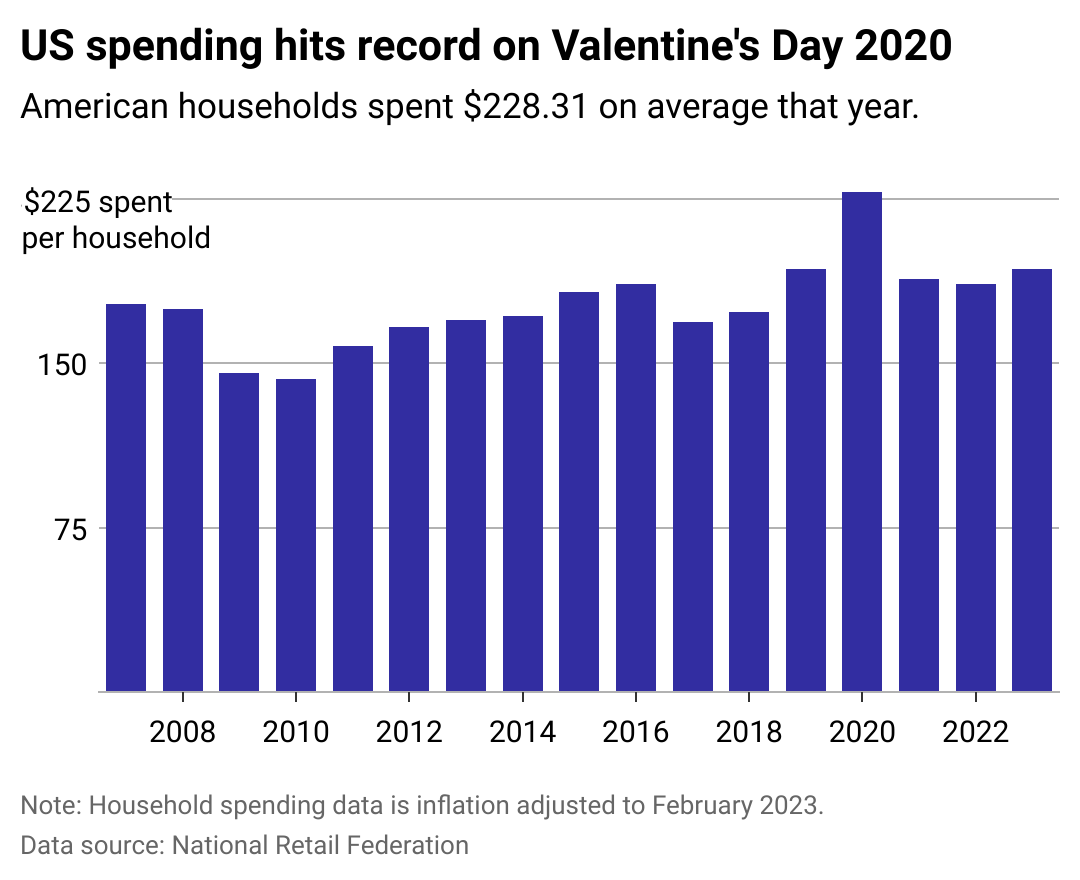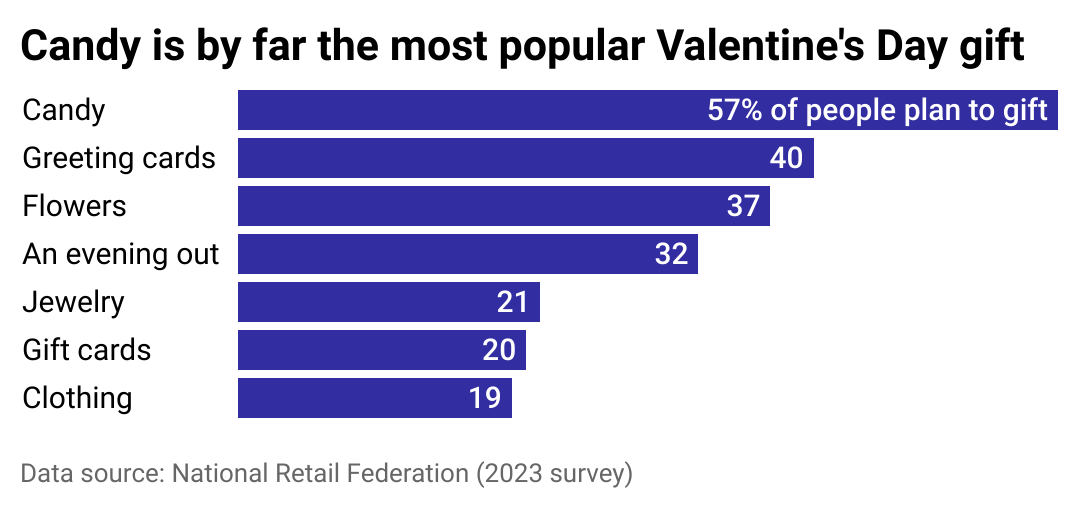
How Americans spent nearly $26B on Valentine's Day in 2023
This story originally appeared on Jewel360 and was produced and distributed in partnership with Stacker Studio.
How Americans spent nearly $26B on Valentine's Day in 2023
Feb. 14 has long been a day to show loved ones how much you care about them. In modern times, such displays of affection come with a price tag.
According to the National Retail Federation, consumers spent an estimated $25.9 billion in 2023 on Valentine's Day, one of the busiest holidays for florists and confectioners. The day of love, however, wasn't always about gifts. The holiday's pre-Catholic origins are murky and possibly rooted in an ancient Roman fertility celebration. As the Catholic faith emerged, pagan rituals blended with Catholic celebrations, helping ease the conversion process for would-be believers.
Celebrating the life of the martyr Saint Valentine is a far cry from the exhilaration of love. For that, we can thank Geoffrey Chaucer, whose poetic works forever connected romance and chivalry to this rose-tinged day. Others soon followed Chaucer's lead and filled Saint Valentine's Day with sonnets and couplets of lovestruck knights and maidens.
By the mid-1800s, the commercialization of Valentine's Day was well on its way, buffeted by companies still well known for trading on love and romance. Cadbury cemented its place in Valentine's Day history by developing its now-iconic heart-shaped box of chocolates and introducing it in 1868. Hallmark also became a memorable part of the holiday when it released its first mass-produced line of Valentine's Day cards in 1916.
Today, even more options abound for candy, flowers, and jewelry—not to mention dinner at a good restaurant. Savvy marketers have also found ways to sell not just to couples but to single folks and children. According to the National Retail Federation, consumers spent an estimated $25.9 billion in 2023 on Valentine's Day, one of the busiest holidays for florists and confectioners. Jewel360 mapped Valentine's Day spending using 2023 survey data from the NRF to understand how Valentine's Day purchases have changed over time.

Americans spend nearly $200 per household on Valentine's Day
At the end of 2019, the U.S. economy had a gross domestic product of 2.3%. At the time, the country was experiencing growth for the last 126 months, the longest economic expansion on record. Buoyed by this strong economy and higher wages, U.S. households spent lavishly on their loved ones.
Optimistic consumers also opted to share the love with more people than just their spouse or significant other: The NRF found in 2020 that people were spending more on friends, co-workers, and pets than they had a decade prior. In the past couple of years, the most remarkable increase has been Valentine's Day spending for children's classmates and teachers, which rose sharply from 1 in 5 people intending to buy gifts for their young ones and their teachers in 2021 to 1 in 4 people in 2023.
Valentine's Day spending can also depend on the day of the week. In 2020, it was Fridays, a boon for restaurant owners. In 2023, it was Tuesdays, an excellent day for florists, though inflation impacted the floral industry, with wholesale prices for roses rising by 50%, according to NPR.

Inexpensive items top the most popular gifts
On Valentine's Day, being sweet is a safe choice for many gift-givers. Candy is budget-friendly, comes in various flavors, and is something people of all ages usually want. According to the National Confectioners Association, 9 in 10 people wanted to receive candy for the winter holiday, which fueled spending in 2023. Chocolate candy sales rose 11.2% to $2.8 billion, and nonchocolate candy rose 21.4% to $1.4 billion.
Although people send far fewer cards and letters—first-class mail dropped nearly 11% in 2022 compared with 2019—giving Valentine's Day cards is one of the simplest ways of showing the people in your life that you care. People give approximately 145 million Valentine's Day cards every year, according to Hallmark—and that's not including cards kids exchange in classrooms.
Lately, however, more and more people are looking toward gifting more than material objects. NRF's 2023 report found that about 1 in 3 (32%) people planned gifts of experience, up from about 1 in 4 (26%) in 2022. This Valentine's Day, you could just as easily find yourself combing through reams of cards or perhaps enjoying a moonlight hike, spa treatment, or a night at the theater.
But no matter the gift, isn't it always the thought that counts?
Story editing by Carren Jao. Copy editing by Paris Close. Photo selection by Michael Flocker.



